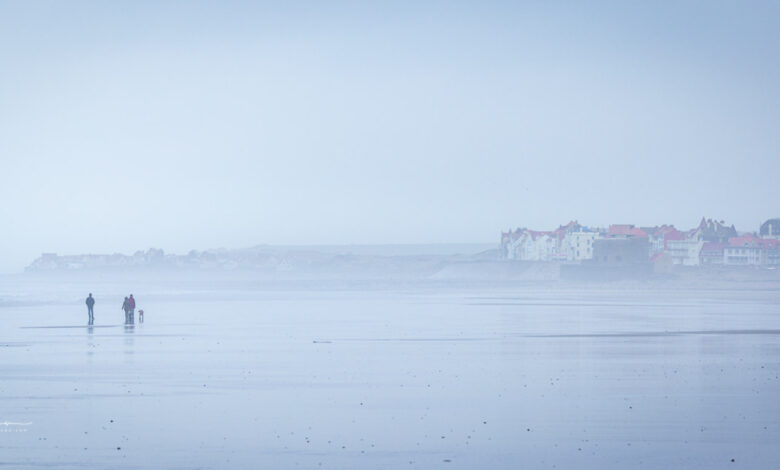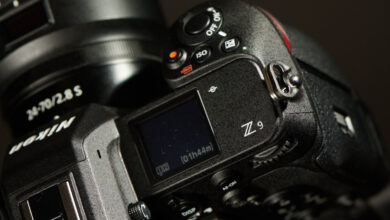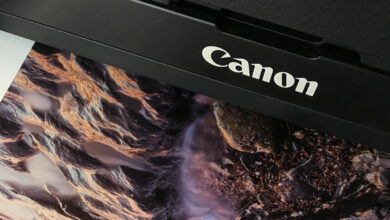Using Positive and Negative Space for Composition in Photography

There are many ways for a photographer to compose. Although some people don’t want to accept it, the rule of thirds is often quite appropriate. But no matter what you use as the basis for the layout, we always use negative space. Most of us don’t realize it.
I wrote an article on the origin of the rule of thirds and the golden ratio for composition techniques. That article isn’t about right or wrong or whether you should use one or the other. It is to understand how these universal rules came into being. You can find the article by following this link.
There is an interesting comment about using negative space with these rules. Should all negative space be included when drawing golden ratio or Fibonacci spiral on layout? An answer soon followed, mentioning how difficult it is for negative space to be quantified or even used to apply the spiral, which is a perfect explanation.
But what is negative space and how can it be used in a layout? When we take a closer look at negative space, it becomes clear that we use this in almost every layout we create, even if the frame has many elements. Negative space is not the same as minimalist images, although minimalist images contain a lot of negative space. Confused? Do not, the difference is not difficult.
Positive space and negative space
We must realize something important. Negative space cannot exist without its opposite, positive space. It is similar to black and white, light and dark. Although we always hear or read about negative space in images, positive space is not mentioned at all. It is forgotten or just taken for granted.
In fact, negative space and positive space are almost always present in a composition. It allows us to find balance in the image by setting the focus. It also allows us to get symmetry or rhythm by distributing elements in the frame. To understand negative space, it’s important to know what positive space is and how it affects an image.
Take a closer look at the positive space
Everything that attracts attention in the composition is considered a positive space. This is usually the object in the frame, perhaps along with additional elements. This active space is set according to one of the well-known rules or principles of layout.
In other words, we use the rule of thirds, or the golden ratio, or the nine basic shapes as mentioned in composition theory. I also wrote an article about those nine basic shapes. Follow this link if you are interested.
It is possible to fill the frame with a large subject, reducing the amount of space that is less important. In other words, most frames contain active space. It is also possible to add various small elements to completely fill the frame.
In the first case, the object attracts all the attention. In the latter case, the image becomes a busy, possibly even chaotic place. In many cases, this won’t look good. It may even be completely missing an appropriate ingredient.
A closer look at negative space
The opposite of positive space is negative space. Simply put, it’s the part of the image that doesn’t attract much attention or anything. Negative space can be created by clearly distinguishing between the subject and its surroundings, or by removing all distracting elements from the frame. Often, this results in a photo that emphasizes emptiness, loneliness, isolation, and even a sense of scale.
However, negative space doesn’t have to be completely empty. It can contain elements of all types. Even a frame covered with brown and red leaves is negative space when a single yellow leaf stands out, being the subject of the frame. Just remember, everything is off-topic and additional elements are considered negative space.
Find the balance between positive and negative space
The best way to use negative space in an image is to find its perfect balance with positive space. You can use it to adjust the amount of attention the subject receives in the frame. It can be used to emphasize size, as mentioned earlier, or to evoke a certain feeling or emotion.
Despite all that, it is still necessary to use some kind of composition rule or guide to position the positive space within the boundaries of the frame and find the perfect balance between the two. That means negative space is not a separate composition rule that can be used. It is part of the general composition, describing the difference between the subject and the rest of the frame.
minimalism
Negative space is often confused with minimalism. Although they look quite similar at first glance, I believe the two are completely different. Minimalism, among other names, is also described as minimal art, which is a better description. It can be achieved by displaying a theme in the simplest way, without any abstraction. This can be done by placing an object in a frame that doesn’t contain anything else. The frame will contain mostly negative space, with only a small subject.
There are three important characteristics that make up a minimalist image. The first is the heavy use of negative space, as mentioned. The second characteristic is the size of the object. It should take up a small portion of the image, although there can always be exceptions. But in general, the larger it is, the less minimalist it is. Finally, the absence of other elements in the frame is crucial, helping to distinguish it from regular negative space.
Even with minimalism, it’s wise to incorporate one of the layout rules. It allows for a nice placement of an object in a blank canvas. But it can be easy to diverge from these rules and push the limits of what is acceptable.
If you have any additions to the use of negative space or minimalism or any other thoughts on this, feel free to share in the comments section below. I look forward to reading your comments on this topic.




